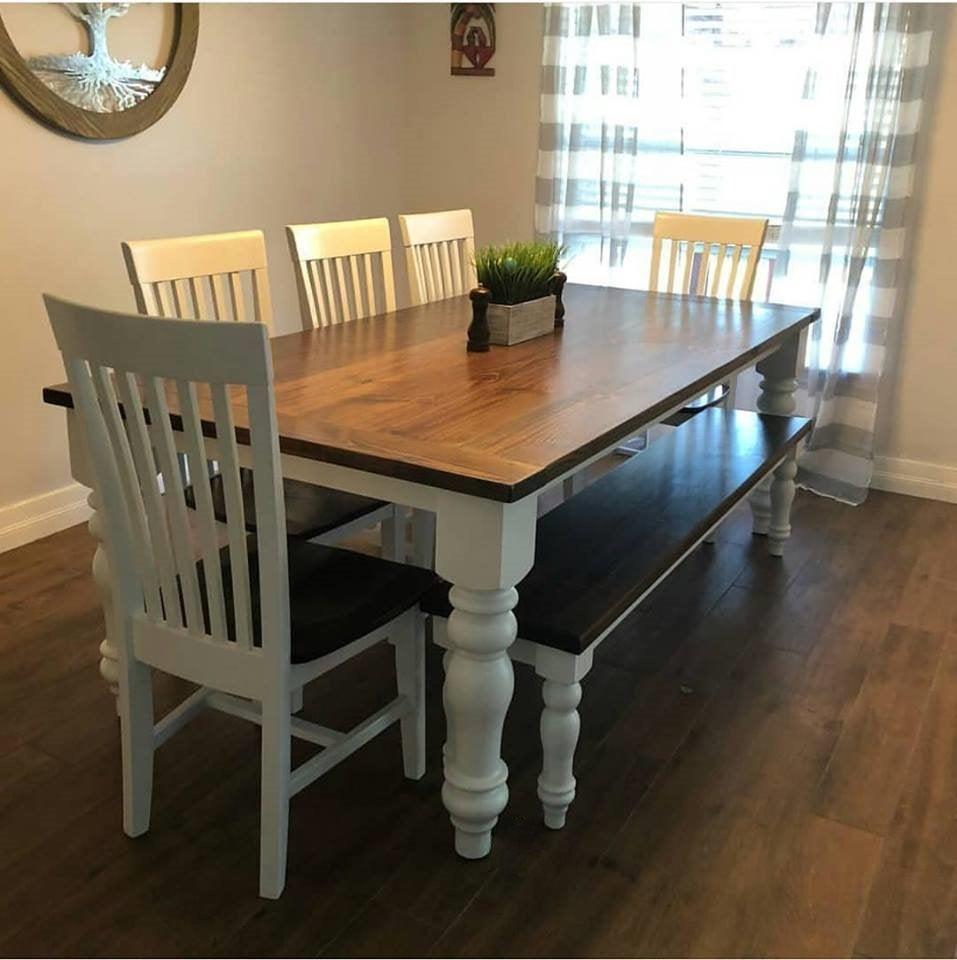Custom Dining Room Table Legs: A Stylish Addition to Any Kind Of Home
Custom Dining Room Table Legs: A Stylish Addition to Any Kind Of Home
Blog Article
A Comprehensive Look at Eating Table Leg Styles: Locating the Suitable Match
Picking the appropriate dining table leg style is crucial for both visual charm and useful functionality. Traditional 4 legs provide timeless style and security, while the pedestal base gives boosted legroom and a modern appearance. For those with larger tables, trestle legs ensure tough support, whereas hairpin legs present a mid-century modern ambiance with their minimalist layout. The x-shaped legs blend modern style with enhanced security. Each of these options brings one-of-a-kind benefits, making the selection greater than simply a matter of choice. Check out further to find which style flawlessly matches your eating space and way of living.
Traditional Four Legs
Among the numerous kinds of eating table leg styles, the conventional four-leg style stays a classic selection for many homes. This traditional arrangement supplies an unified mix of functionality and aesthetic appeals, making it a seasonal favorite. Four legs supply balanced support, ensuring the table remains stable and efficient in bearing substantial weight. This is especially beneficial for families that frequently hold big events or use their eating table for numerous objectives, such as job or crafting.
From an aesthetic perspective, the traditional four-leg layout can be quickly adjusted to different indoor styles. Whether crafted from wood, steel, or a mix of materials, these legs can be intricately sculpted, streamlined and minimalistic, or anything in between. Their versatility permits them to match both rustic and contemporary setups seamlessly.
Furthermore, the straightforward framework of the four-leg layout helps with ease of motion and positioning within an area. Unlike even more complicated bases, this design reduces obstructions, supplying enough legroom for diners. In summary, the traditional four-leg dining table leg design marries enduring sophistication with practical performance, making it an astute choice for those seeking both type and function in their dining furnishings.
Pedestal Base
Typically celebrated for its classy and space-efficient layout, the pedestal base is a recognized choice to the traditional four-leg configuration in table leg designs. This distinctive base typically features a single main column sustaining the table top, which can differ in form, from ornately sculpted timber to sleek, contemporary steel. Among the key advantages of the pedestal base is its capability to make best use of legroom and seating flexibility. Without edge legs, restaurants are afforded better liberty of motion, making it an ideal option for round and oblong tables that promote more intimate and comprehensive events.
Additionally, the stand base's central assistance can deal with substantial weight, allowing for using much heavier table tops, such you can try these out as marble or thick hardwood. This stamina coupled with its aesthetic flexibility makes the pedestal base a preferred choice in both typical and contemporary interior settings. It can perfectly incorporate with numerous style motifs, from classic elegance to minimal modernity. Moreover, the central column itself offers a canvas for complex designs and creative expressions, adding an aspect of aesthetic rate of interest under the table. In summary, the pedestal base incorporates functionality with more info here design, making it a fine-tuned and useful choice for varied dining settings.
Trestle Legs
Trestle legs supply a robust and timeless structure for eating tables, identified by their straight cross-bracing and durable support light beams. Stemming from medieval times, this layout has developed yet preserved its crucial structure, making it a seasonal favorite in both conventional and modern settings. The main trestle beam of light, commonly sustained by 2 or even more vertical messages, offers outstanding security, enabling for bigger table sizes weblink without the demand for extra legs.
A significant advantage of trestle leg tables is the ample legroom they supply. Unlike tables with 4 edge legs, the lack of obstructions at the table's edges gives unblocked room for chairs and restaurants, improving comfort and access. This makes trestle tables suitable for fitting bigger gatherings, whether in a dining-room or a reception hall.
From rustic farmhouse to smooth modern layouts, trestle legs can be customized to match specific tastes. Their long-lasting allure and functional advantages make trestle legs a compelling option for those seeking both style and usefulness in their dining table.
Barrette Legs

The allure of hairpin legs lies in their simplicity and flexibility - dining room table legs. Readily available in a series of products, including steel and brass, they can be ended up in numerous shades to match various indoor designs. Whether combined with a rustic wood table top or a contemporary glass surface area, hairpin legs effortlessly mix capability with a touch of vintage appeal
Sturdiness is another noteworthy feature of barrette legs. Regardless of their delicate look, these legs are engineered to birth considerable weight, ensuring the table stays stable and safe. Furthermore, they are relatively very easy to set up, making them a popular selection for DIY fanatics and expert furnishings manufacturers alike.
X-Shaped Legs

Built from products such as steel, timber, or a combination of both, X-shaped legs can be customized to match different style choices. Steel legs usually offer a streamlined and commercial feel, suitable for loft-style homes and contemporary dining spaces.
Moreover, the design behind X-shaped legs makes certain also weight distribution, decreasing the threat of tottering and improving toughness. This makes them especially appropriate for bigger table that need additional support. Essentially, X-shaped legs mix sensible design with modern appearances, making them a timeless choice for varied eating atmospheres.
Verdict
A detailed understanding of eating table leg designs exposes the distinctive attributes and advantages of each layout. Trestle legs make certain durable support for bigger tables, and barrette legs introduce a mid-century contemporary visual.
Report this page